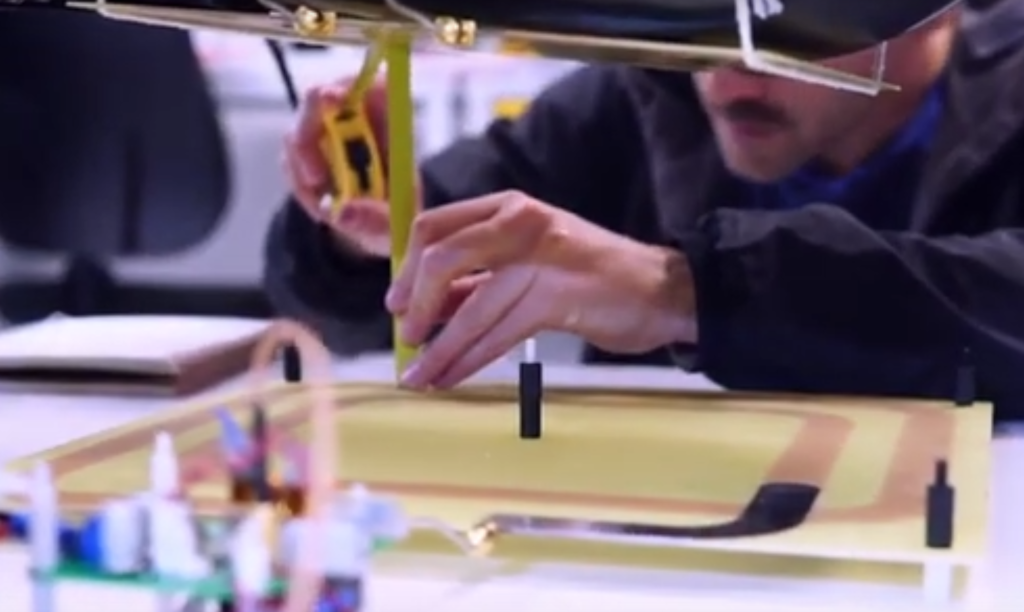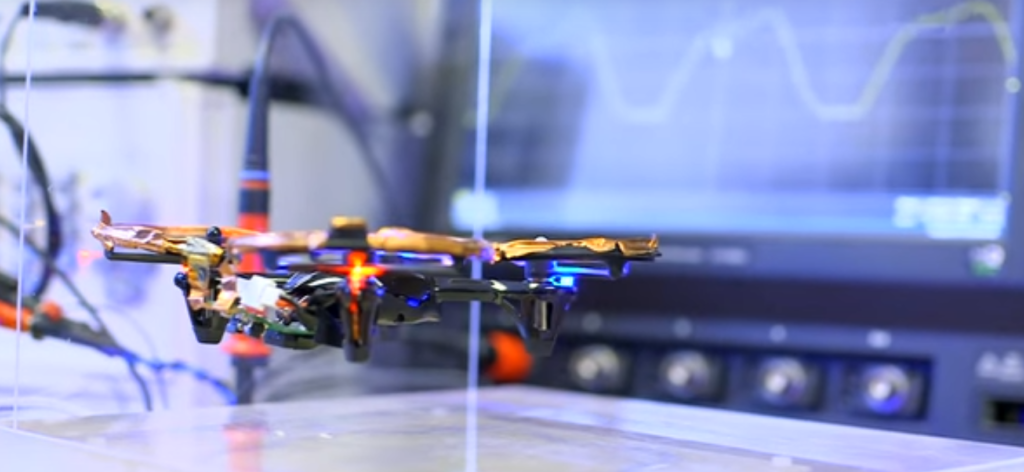E-bikes, electric scooters, drones… – how can we charge all of these devices using wireless power transfer?
Well, this is exactly what a team of Imperial College London post-doctoral researchers from the Department of Electrical and Electronic Engineering are investigating. Their startup is called BumbleBee Power, and it was developed in Imperial’s impressive Wireless Power Lab.

During my tour of BumbleBee Power’s lab, Dr. Christopher Kwan and Dr. Juan Artega explained a fundamental and innovative application of Wireless charging: E-scooter charging. Throughout their immense research, the researchers have developed an avant-garde solution to the current charging issue.
Currently, urban hire e-scooters are used extensively throughout many cities – a key example being Central London. Companies such as Voi are leading this technology in e-scooters in a flourishing market.

However, the problem lies in the fact that the e-scooters rely predominantly on battery-swapping and cable-based charging, which limits the scalability of these hire e-scooters. The company has to manually find and charge each and every e-scooter each night in order to ensure that they are usable for the next day.
Although there are a couple of existing technologies that use wireless charging to solve this problem, BumbleBee Power has many unique selling points that set them apart from the rest.
- BumbleBee’s wireless charging technology allows the e-scooter to be positioned in multiple directions, and has three times the tolerance to misalignment. This makes the technology much more realistic in the real-world, where users will find it challenging to precisely position the e-scooter each time they need to put it to charge ✔️
- BumbleBee’s technology offers three times the wireless range for the e-scooter to be charged, which means that the distance between the e-scooter and the coil can be much larger than existing technologies✔️
- Their technology weighs less than 10% of any existing solution, which means it is much more lightweight when used ✔️
This solution has been missing from the market for many years. In fact, the shared electric micro-mobility market estimates to spend more than £140 billion on battery charging by the year 2030! That is a fortune! Hence, BumbleBee Power’s solution is economically beneficial because it offers a 50% cost-saving for urban e-scooter hire schemes, as well as making it much more favourable for the customer.

The future promises to be very exciting for BumbleBee Power. They have teamed up with many industry experts who are keen to use their revolutionary technology. One such example includes Voi, one of the leaders in micro-mobility vehicles. By using BumbleBee’s wireless solution, Voi has numerous advantages such as:
- reducing the need to transfer e-scooters from the road to the warehouses (to be charged)
- providing convenience, but with the same efficiency when charging
- keeping the e-scooters active on the roads for a longer duration
How does the technology work? (basics!)
The principles of this technology relies on the key Physics concept of Electromagentic induction and hence, Inductive Charging.
- Firstly, an alternating current is passed through an induction coil in the charging pad
- The alternating current ensures that the electric charge is constantly moving
- This creates a magnetic field, which is also constantly changing in strength (because of the AC)
- A changing magnetic field produces an alternating electric current in the induction coil of the e-scooter
- This is converted into a direct current which finally charges the battery inside of the e-scooter


Interestingly, this fundamental technology was first used in 1894 by Hutin and Le-Blanc, who attempted to use this method to power an electric vehicle.
Wirelessly charging a drone in flight!
This same technology is also used to wirelessly charge a drone in flight, which I was able to see in the Wireless power lab.
One of the major problems with drones right now is the battery power. The team at Imperial College London are researching if they can find a solution to this issue…
The drone below is flying like usual, but it has NO BATTERY because it is being wirelessly powered by the power transfer pad beneath it.
You may be asking whether this technology is new, because you have seen wirelessly charging phones. Yes it is true that this technology exists, however the Wireless Power lab can wirelessly charge the drones at much larger distances! In order to get this to work, the system must be operated at higher frequencies. But to ensure the system remains efficient, the jump between frequencies must go up in factors of 10 or a 100. This is essentially where the difficulty lies.

The benefits of this technology include re-charging medical implants inside the heart, such as ventricular assist devices (to help those with weak heart muscles). Currently, these pumps inside the heart must be powered by a wire which is punctured through the skin of the patient, which increases the risk of infections. But with the wireless power technology, these pumps can be powered wirelessly – avoiding any risk of infections.

Thank you!
Thank you very much to the team at Imperial College London’s wireless power lab for explaining this technology to me in great detail, as well as showing me the various applications of the wireless charging technology in real-life. I look forward to seeing this technology in Central london soon. Best of luck to the researchers.
Thanks to Mr. Nikhil Shah at S-Cube for his support in helping me to see the Wireless power lab.
References
- https://www.voiscooters.com/blog/voi-partners-with-imperial-college-spin-out-bumblebee-power/
- https://www.imperial.ac.uk/news/197756/startup-profile-bumblebee-power-developing-efficient/
- http://www.imperial.ac.uk/wireless-power/video-gallery/
- https://en.wikipedia.org/wiki/Inductive_charging

